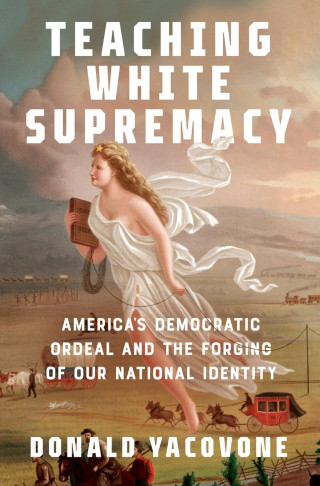Historians may occasionally bemoan their lack of influence, but as my appraisal of our nation’s textbooks revealed, historians of the twentieth century exerted an enormous impact on the way modern Americans have come to understand their history. The results are painfully evident and their work either got filtered down into the schoolbooks as interpreted by educators, professors of education, and school administrators, and sometimes through popular authors, or was directly transmitted by preeminent Ph.D.-trained scholars. The results of that considerable influence we can see today in cities and towns from Charlottesville and Richmond, Virginia, to Berkeley, California. To appreciate why white supremacy remains such an integral part of current American society, we need to appreciate how much it suffused our teaching from the outset.
Noah Webster’s History of the United States (1832), unexpectedly published in Louisville, Kentucky, is distressingly typical of most U.S. history textbooks published before the Civil War. The Connecticut-born Webster of dictionary fame once told the black minister and abolitionist leader Amos G. Beman that “wooly haired Africans” have “no history, & there can be none.” To Beman, Webster dismissed Africans as nonentities and in his book he elevated puritans, especially Connecticut puritans, to the level of founding fathers. His History made only passing mention of colonies (later states) below Mason-Dixon and completely ignored slavery. History, for Webster, was the record of his puritan forebearers, and no others. The standard of whiteness-in-history had been set.
Until 1860, no American history textbook ever mentioned the name of an abolitionist or even the existence of an antislavery movement. If slavery was mentioned at all, the discussion focused on Congress and on political leaders like Henry Clay. History, for these authors, took place in European exploration, colonization, Revolution, Constitution-forming, party politics, and in successive presidential administrations — and nowhere else. The Connecticut-born Samuel Griswold Goodrich, who famously also wrote as “Peter Parley,” became one of the most successful textbook authors and writers of the mid-nineteenth century. He claimed to have published 170 different volumes, selling 7 million copies. He also boasted that his Pictorial History of the United States, originally published in 1843 (also in Louisville) and still in print after the Civil War, sold 500,000 copies. His 1866 edition, published after Goodrich’s death in 1860, simply tacked on a new chapter about the war to the older edition, but neglected to discuss the fall of slavery. Thus, the message to students: black lives do not matter.
